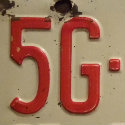
The path to 5G has been notable for the lack of acrimony over radio standards, but that doesn't mean there's no rivalry at all.
Alcatel-Lucent (NYSE: ALU) and Huawei Technologies Co. Ltd. are pitching rival radio access technologies for 5G, but it's not the kind of knock-'em-down, drag-'em-out fight which made 3G and 4G standard-setting so entertaining for bystanders.
AlcaLu is offering a technology called UF-OFDM, or Universal Filter OFDM, which it says can support low-bandwidth, low-powered IoT at one end of the scale and high-bandwidth video at the other.
Huawei is also proposing an enhancement on the OFDM wave form which it calls Filtered OFDM. Separately it is working on something called Sparse Code Multiple Access (SCMA).
The prime reason for this even-tempered contest is that 5G will be a family of radio interfaces -- such as millimeter wave, LTE and WiFi -- all managed as one.
"We've all sort of agreed that 5G will inherit the best of what's there and add in only enough new that is needed. That's why we're not so panicked about it," said Marcus Weldon, Alcatel-Lucent CTO.
The problem a new radio interface would have to solve is supporting a huge number of IoT devices in an efficient way.
Want to know more about 5G? Check out our 5G content channel here on Light Reading.
OFDM requires continual synchronization between the device and the network, which in an IoT context puts demands on the network and on device consumption. That means OFDM-based LTE isn't an efficient way of supporting IoT.
According to Weldon, UF-OFDM alters the shape of the wave form "in a way that the sync is not as strict." In other words, it still syncs, but in a less demanding way.
He says testing so far shows it also can support high-bandwidth apps like video, and the company is showing off a UF-OFDM demo at its MWC booth. "But this is still being verified. There may be some cases where a highly synchronized wave form is better."
True to the spirit of this modest competition, Huawei today announced plans to jointly test 5G radio interfaces with NTT DoCoMo -- but isn't disclosing any specifics.
— Robert Clark, contributing editor, special to Light Reading
About the Author(s)
You May Also Like











